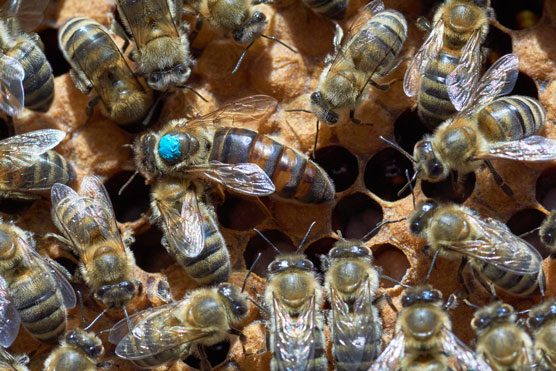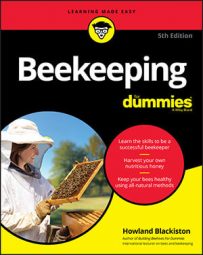 © Konstantin Gushcha / Shutterstock.com
© Konstantin Gushcha / Shutterstock.comAll female bees start out the same way: from a fertilized egg. After two to three days, the fertilized egg of the bee destined to be a queen hatches into a young larva, just as with worker bees. All the newly hatched larvae are fed royal jelly. A day or two after the egg hatches into a young larva, it’s decision time. A larva that goes down the road to queendom continues to receive a plentiful supply of rich royal jelly, and only royal jelly. But larvae that will become workers are switched to brood food, which is a nourishing but coarser diet of honey and pollen.
A queen takes just 16 days to develop. (A worker takes 21, and a drone takes 24.)
Here’s how the queen’s development proceeds and a few notes for your queen-rearing efforts:
- Days 1–2: The egg stands on its end on the bottom of the cell.
- Day 3: The egg hatches and absorbs its chorion (outer shell), and the newly hatched larva lays down on the base of the cell and is fed royal jelly exclusively.
- Days 4–8: The cell containing the developing larva remains open, and the larva is fed royal jelly by nurse bees. The cell is extended downward and elongated into a vertical shape, sometimes described as looking like a peanut shell. (Larvae destined to become worker bees remain in cells parallel to the ground, and they are fed a different food that causes them to develop into a worker bee.) Note: Day 4 is the best time for a young larva to be selected to become a queen rather than a worker.
- Day 9: The queen cell is capped, and the developing queen (pupa) consumes royal jelly that the workers stored in the cell with the larva. She spins a cocoon inside the cell.
- Days 10–14: The developing queen transforms into its adult form. Her body is soft and very Note: Do not tip or jostle the queen cell during this time. Doing so may irreparably damage the queen’s development.
- Day 15: The developing queen is now less fragile. Note: At this point the queen cell can be carefully moved to a queenless nuc.
- Day 16: The queen emerges from her cell. Note: Cool temperatures can slow the queen's development, as can extreme heat. Under such conditions, a queen could take 17 or 18 days to emerge.
The empty queen cell will be left with a circular hole in the bottom for a time, then the bees will begin tearing it down.
A virgin queen running loose in a colony is hard to spot. A virgin queen is often on the small side, not much larger than a worker (she’ll plump-up after she mates). She walks quickly and without the stately pace of a mated queen. The other bees don’t pay her much attention — there’s no entourage of attendants circled around her. So, if you don’t find her, don’t worry. A virgin emerging from a cell into a queenless colony is very likely to be accepted — hey, she’s the only game in town.
A virgin queen takes a few days to mature — her wings expand and dry, her glands mature, and so on. Then she needs a few days more to fly and mate, and a few days more to settle down to laying eggs. Allow two or three weeks from emergence to the time when she will begin laying eggs.
